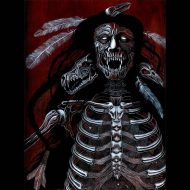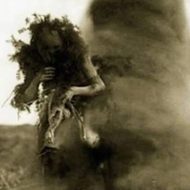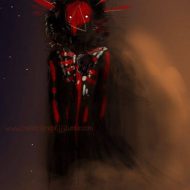Chindi : The Unspoken Ghost
Listen
At a glance
| Description | |
|---|---|
| Origin | Navajo Mythology |
| Classification | Ghosts |
| Family Members | N/A |
| Region | United States of America |
| Associated With | Death, Sickness |
Chindi
Introduction
In Navajo mythology, a chindi is the ghost of a deceased person that’s supposed to leave the body with the person’s last breath. According to the tradition, this is because the person was unable to bring about universal harmony during his or her lifetime. The belief that contact with a chindi can induce ghost sickness is also indicated by the tribe’s traditional practices.
According to the beliefs of the Navajo, chindi are known to remain around the deceased’s possessions, so they are often destroyed after death and the deceased’s name is never said after death, as they fear that that will make one ill. The practice of allowing death to occur outdoors is carried out to allow the chindi to disperse.
Physical Traits
A mini-whirlwind of dust/dirt is said to represent a chindi. The Navajo call these ‘dust devils’ and believe that a clockwise dust devil is a good spirit and the counter clockwise is an evil entity.
Other Names
The Chindi is also spelled chʼįį́dii in Navajo toungue and sometimes written as Chi’idi.
Powers and Abilities
The Navajo believe that the final breath of a deceased person contains all of the sins of that person’s life, and if the Chindi is released outside, it can dissipate on its own. The other belief that suggests that the presence of medicine men and witches can spread the disease carried by the Chindi and that they can infect people with it as well. The symptoms of ghost sickness are usually fever, fatigue, and nausea. It can also be triggered by the presence of a chindi or if a person is exposed to a piece of the body that’s been buried.
Modern Day Influence
Belief in the Chindi is still prevalent in the Navajo community with special rituals being conducted to ward off the effects of the Chindi. Cedar berries are used to make ghost beads, which are made from the hollowed out berries and are designed to protect against evil spirits. They are usually made by allowing ants to consume the insides of the berry, leaving behind a shell that’s punched through, and they are then strung together on necklaces and other accessories. The other type of beads, which are also made from wood, are used to keep the chindi at bay.
Related Images
Frequently Asked Questions
What is lorem Ipsum?
I am text block. Click edit button to change this text. Lorem ipsum dolor sit amet, consectetur adipiscing elit. Ut elit tellus, luctus nec ullamcorper mattis, pulvinar dapibus leo.
What is lorem Ipsum?
I am text block. Click edit button to change this text. Lorem ipsum dolor sit amet, consectetur adipiscing elit. Ut elit tellus, luctus nec ullamcorper mattis, pulvinar dapibus leo.
What is lorem Ipsum?
I am text block. Click edit button to change this text. Lorem ipsum dolor sit amet, consectetur adipiscing elit. Ut elit tellus, luctus nec ullamcorper mattis, pulvinar dapibus leo.
What is lorem Ipsum?
I am text block. Click edit button to change this text. Lorem ipsum dolor sit amet, consectetur adipiscing elit. Ut elit tellus, luctus nec ullamcorper mattis, pulvinar dapibus leo.
What is lorem Ipsum?
I am text block. Click edit button to change this text. Lorem ipsum dolor sit amet, consectetur adipiscing elit. Ut elit tellus, luctus nec ullamcorper mattis, pulvinar dapibus leo.







